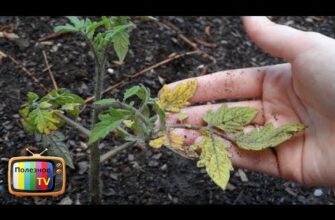- ТОП-5 сортов розовых высокорослых томатов – высокоурожайные и устойчивые к болезням
- 1. Сорт «Розовый гигант»
- 2. Сорт «Розовый бренди»
- 3. Сорт «Розовая груша»
- 4. Сорт «Розовый тигр»
- 5. Сорт «Розовый медведь»
- Великолепный розовый
- Розовый испанский гигант
- Розовый Бренди
- Розовая королева — один из топ-5 сортов высокорослых розовых томатов
- Розовый большевик
- Высокоурожайные сорта
- Устойчивость к болезням
- Характеристики сортов розовых высокорослых томатов — топ-5 сортов
- 1. Барон
- 2. Болеро
- 3. Дебют
- 4. Розовая сказка
- 5. Розовая леди
- Способы выращивания
- Выбор места и подготовка почвы
- Подготовка семян и посев
- Уход за растениями
- Профилактика болезней
- Уход за розовыми высокорослыми томатами
- Подготовка почвы
- Полив
- Подкормка
- Поддержка растений
- Сбор и хранение урожая
- Вопрос-ответ:
- Какие существуют сорта розовых высокорослых томатов?
- Какие из этих сортов самые устойчивые к болезням?
- Какой сорт из списка является самым высокоурожайным?
- Какой сорт розовых высокорослых томатов лучше всего подойдет для выращивания в домашних условиях?
- Нужно ли особое уходить за розовыми высокорослыми томатами?
- Видео:
- Самые урожайные томаты для теплицы
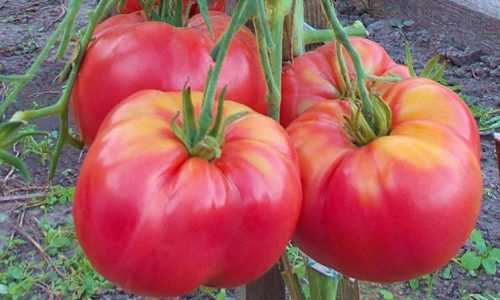
Томаты – одна из самых популярных культур в огороде. Каждый год садоводы стремятся вырастить вкусные и сочные плоды, которые удивят своей красотой и вкусом. В последние годы все большую популярность приобретают розовые высокорослые сорта томатов. Они отличаются не только своим прекрасным внешним видом, но и устойчивостью к болезням, а также высоким урожаем.
В этой статье мы расскажем о пяти самых популярных сортах розовых высокорослых томатов, которые можно успешно выращивать в саду или на приусадебном участке. Эти сорта отличаются не только своей красотой, но и превосходным вкусом.
Первым сортом в нашем топ-5 является «Розовый бренди». Этот сорт получил широкое признание благодаря своему насыщенному розовому цвету и прекрасному вкусу. «Розовый бренди» дает обильный урожай крупных плодов с нежной мякотью и сладким ароматом. Кроме того, этот сорт отличается высокой устойчивостью к болезням и переносит неблагоприятные погодные условия.
Вторым сортом, который занимает достойное место в нашем топ-5, является «Амурский розовый». Этот сорт выделяется своими крупными плодами, которые имеют плотную структуру и сладкий вкус. «Амурский розовый» отличается высоким урожаем и устойчивостью к болезням, что позволяет выращивать его даже начинающим садоводам.
Третье место в нашем рейтинге занимает сорт «Розовая плюшка». Этот томат имеет привлекательный внешний вид благодаря своей округлой форме и нежно-розовому цвету. «Розовая плюшка» отличается высокой устойчивостью к различным болезням и дает обильный урожай плодов с мякотью, которая тает во рту и имеет приятный сладковатый вкус.
Четвертое место в нашем списке занимает сорт «Розовый гигант». Как следует из названия, этот томат отличается своими большими плодами, которые имеют массу до 500 грамм. «Розовый гигант» обладает нежной мякотью и сладким ароматом. Этот сорт также известен своей высокой устойчивостью к болезням и отлично справляется с переменами погоды.
Пятое место в нашем топ-5 занимает сорт «Розовый крем». Этот томат отличается своим нежно-розовым цветом и мягкой текстурой. «Розовый крем» имеет сладкий и приятный вкус, а также отличается высокой устойчивостью к болезням. Этот сорт является отличным выбором для тех, кто хочет насладиться вкусными и ароматными томатами в своем саду.
Выбор сорта томатов – это ответственный и важный шаг для каждого садовода. Но среди множества розовых высокорослых сортов можно найти истинные жемчужины, которые радуют не только своим великолепным внешним видом, но и вкусом. Надеемся, что наши рекомендации помогут вам сделать правильный выбор и обеспечат вам великолепный урожай вкусных розовых томатов!
ТОП-5 сортов розовых высокорослых томатов – высокоурожайные и устойчивые к болезням

Розовые высокорослые томаты являются одними из самых популярных и востребованных сортов томатов среди садоводов и огородников. Они отличаются не только своей привлекательной розовой окраской, но и высокими урожаями, а также устойчивостью к различным болезням.
1. Сорт «Розовый гигант»

Этот сорт томатов отличается своими большими размерами и высокой продуктивностью. Плоды «Розового гиганта» достигают веса до 500 граммов и имеют сладкий вкус. Томаты этого сорта отлично сохраняются и подходят для приготовления различных блюд.
2. Сорт «Розовый бренди»
Этот сорт томатов отличается своими маленькими, но очень ароматными плодами. Они имеют характерный сладко-пряный вкус и прекрасно сочетаются с другими ингредиентами в салатах и соусах. «Розовый бренди» также обладает высокой устойчивостью к болезням.
3. Сорт «Розовая груша»
Этот сорт томатов получил свое название благодаря своей форме, напоминающей грушу. Плоды «Розовой груши» имеют нежную мякоть и сладковатый вкус. Они отлично подходят для приготовления домашних заготовок и соусов.
4. Сорт «Розовый тигр»
Этот сорт томатов отличается своими необычными плодами с полосами розового и желтого цвета, которые напоминают тигровую шкуру. «Розовый тигр» имеет сладкий и сочный вкус, а также высокую устойчивость к болезням.
5. Сорт «Розовый медведь»
Этот сорт томатов отличается своими крупными плодами и высокой устойчивостью к болезням. «Розовый медведь» имеет сладкий и мясистый вкус, идеально подходит для приготовления свежих салатов и кулинарных экспериментов.
Выбор того или иного сорта розовых высокорослых томатов зависит от ваших предпочтений и целей выращивания. В любом случае, эти пятеро сортов обеспечат вам обильные урожаи и радость от выращивания собственных вкусных и полезных томатов.
Великолепный розовый
Среди многочисленных сортов высокорослых томатов, особое внимание заслуживает великолепный розовый. Этот сорт отличается высокой устойчивостью к болезням и высокой продуктивностью.
Великолепный розовый входит в топ-5 розовых сортов томатов, благодаря своим уникальным качествам. Плоды этого сорта имеют ярко-розовый цвет, очень вкусные и сочные. Они отлично подходят для приготовления соусов, салатов и других блюд.
Сорт высокоурожайный и характеризуется долгим периодом плодоношения. Кусты растут достаточно высокими, поэтому требуют опоры для поддержки. Однако, великолепный розовый не требует особого ухода и легко адаптируется к различным климатическим условиям.
Помимо всего прочего, этот сорт также обладает устойчивостью к основным заболеваниям томатов, таким как фитофтора и мозаика. Это позволяет получить стабильный урожай без дополнительных обработок и применения химических препаратов.
Розовый испанский гигант
Розовый испанский гигант – один из лидеров среди розовых сортов высокорослых томатов. Этот сорт входит в топ-5 устойчивых и высокоурожайных томатов.
Розовый испанский гигант отличается крупными и сочными плодами розового цвета. Они имеют среднюю массу около 200 грамм. Томаты этого сорта отличаются отменным вкусом и приятным ароматом. Они идеально подходят для приготовления свежих салатов, соусов и кетчупа.
Кроме высокой продуктивности, розовый испанский гигант отличается устойчивостью к болезням и неблагоприятным погодным условиям. Это позволяет садоводам получать стабильный урожай даже в сложных условиях.
Семена розового испанского гиганта можно посеять в грунт или выращивать через рассаду. Выращивание через рассаду позволяет получить более ранний урожай. При правильном уходе и подходящих условиях, созревание плодов происходит в течение 75-80 дней после высадки рассады в грунт.
- Цвет: розовый
- Масса плода: примерно 200 гр
- Вкус: отменный
- Целевое использование: свежие салаты, соусы, кетчуп
- Устойчивость к болезням: высокая
Розовый Бренди

Розовый Бренди — один из топ-5 сортов розовых высокорослых томатов. Этот сорт отличает высокая устойчивость к болезням и способность обеспечивать высокий урожай.
Томаты розового Бренди имеют большой размер и прекрасное качество. Их форма может быть различной — от округлой до грушевидной. Они обладают интенсивным розовым цветом, обтекаемой формой и гладкой поверхностью.
Вкусовые характеристики розового Бренди также радуют. Они отличаются сладким и насыщенным вкусом с приятной кислинкой. Мякоть томатов плотная и сочная, что делает их идеальными для использования в свежем виде или приготовления различных блюд.
Розовый Бренди является великолепным выбором для тех, кто хочет получить высокий урожай розовых томатов. Сорт отличается отличными показателями продуктивности и устойчивостью к различным болезням, что позволяет получить качественные плоды на протяжении всего сезона.
Если вы любите розовые томаты и хотите получить максимальный урожай, то розовый Бренди — один из лучших выборов для вас. Попробуйте этот сорт и насладитесь его отличным вкусом и качеством!
Розовая королева — один из топ-5 сортов высокорослых розовых томатов
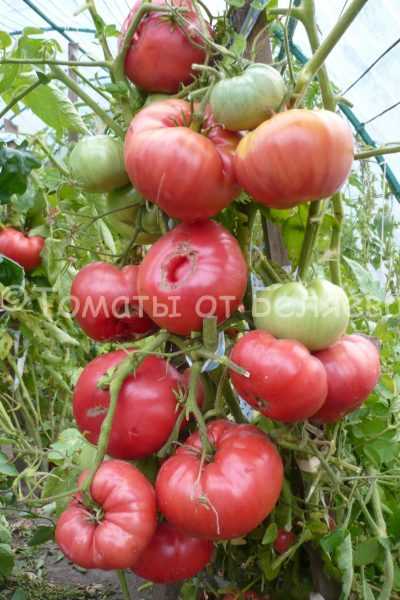
Розовая королева — это один из лучших сортов розовых высокорослых томатов. Она занимает почетное место в топ-5 сортов благодаря своим уникальным качествам. Она отличается высокой устойчивостью к различным болезням, что делает ее идеальным выбором для домашнего садоводства.
Основным преимуществом розовой королевы является ее высокая урожайность. Плоды этого сорта томатов имеют красивую розовую окраску и отличаются отличным вкусом. Они идеально подходят для приготовления различных блюд, в том числе для свежих салатов, соков и консервации.
Розовая королева отличается также высокой устойчивостью к болезням, что позволяет садоводу сэкономить время и усилия на борьбу с вредителями. Она хорошо переносит неблагоприятные погодные условия, что позволяет получать высокий урожай даже в сложных климатических условиях.
Выращивание розовой королевы не требует особой заботы. Достаточно обеспечить растению достаточное количество солнечного света, регулярный полив и удобрение. Подходящее время для сбора плодов — когда они достигнут оптимальной зрелости и приобретут насыщенный розовый цвет.
Выводя «Розовую королеву» в топ-5 сортов розовых высокорослых томатов, можно смело утверждать, что этот сорт является настоящей находкой для садоводов. Он сочетает в себе высокую урожайность, прекрасный вкус и устойчивость к болезням, что делает его идеальным выбором для любителей выращивания своих собственных овощей.
Розовый большевик
Среди топ-5 сортов розовых высокорослых томатов, особое место занимает сорт «Розовый большевик».
Этот сорт известен своей высокой урожайностью и устойчивостью к болезням.
Розовые плоды «Розового большевика» отличаются крупным размером и насыщенным цветом.
Этот сорт прекрасно подходит для выращивания как в теплице, так и на открытом грунте.
Так стоп!!! Вы всё ещё не подписаны на наши каналы в Телеграмм и Дзен? Посмотрите: ТГ - (@historyfantasydetectivechat) и Дзен (https://dzen.ru/myshortsstorys)
Характеризуется высокой устойчивостью к поздней золотистой мозаике и фитофторе.
Высокоурожайные сорта
Среди высокорослых и устойчивых к болезням сортов розовых томатов можно выделить топ-5 самых высокоурожайных представителей. Эти сорта отличаются своей способностью давать обильные урожаи без особых усилий и забот со стороны садовода.
- Розовый медведь — выдающийся сорт, который отличается своими большими плодами, достигающими веса до 500 грамм. Растение обильно плодоносит и имеет хорошую устойчивость к болезням. Одна из главных особенностей этого сорта — высокий уровень сахара в плодах, что придает им сладкий вкус;
- Розовый гигант — еще один представитель высокоурожайных розовых томатов. Плоды этого сорта имеют крупный размер и отличаются мясистой структурой. Урожайность розового гиганта высока и он обладает устойчивостью к многим болезням;
- Розовый шарм — сорт, который также пользуется популярностью среди садоводов. Плоды этого сорта имеют прекрасный вкус и аромат, а также красивую форму, напоминающую шар. Розовый шарм обладает высокой урожайностью и устойчивостью к болезням;
- Розовый гром — этот сорт отличается крупными плодами и высокой урожайностью. Розовый гром имеет плотную структуру и хорошую устойчивость к различным болезням. Плоды этого сорта идеально подходят для использования в свежем виде, а также для приготовления различных блюд;
- Розовая радость — последний, но не менее важный сорт в нашем топ-5. Плоды розовой радости имеют сладкий вкус и отличаются большим размером. Сорт обильно плодоносит и хорошо сохраняет свои качества даже после длительного хранения.
Выбирая один из этих сортов, вы получите высокоурожайные и вкусные розовые томаты, которые будут радовать вас на протяжении всего сезона.
Устойчивость к болезням
Высокорослые сорта томатов из топ-5 розовых высокоурожайные и устойчивые к болезням. Это означает, что они имеют высокую способность противостоять различным заболеваниям, которые могут негативно сказываться на урожайности и качестве плодов.
Болезни, такие как фитофтороз, вирусные инфекции и грибковые поражения, могут серьезно повлиять на урожайность томатов, поэтому выбор устойчивых сортов является важным фактором при выращивании этих растений.
Устойчивость к болезням – это свойство растений, которые способны сопротивляться и не поддаваться поражению болезнями. Это особенно важно для высокорослых томатов, так как они более подвержены различным инфекциям и грибковым заболеваниям, чем другие сорта.
Среди топ-5 розовых высокорослых сортов томатов можно найти такие устойчивые к болезням сорта, как «Черри-Роза», «Розовый гигант», «Розовый тигр», «Розовый шпрот» и «Розовая груша». Эти сорта имеют высокую устойчивость к грибковым и вирусным инфекциям, что делает их идеальными для выращивания в условиях, где риск поражения болезнями высок.
Характеристики сортов розовых высокорослых томатов — топ-5 сортов
Розовые высокорослые томаты отличаются высокой урожайностью и устойчивостью к болезням. Вот пять лучших сортов таких томатов:
1. Барон

Этот сорт отличается большими урожаями и высокой устойчивостью к болезням. Розовые плоды среднего размера имеют отличный вкус и прекрасно подходят для консервирования, свежего употребления и приготовления соков.
2. Болеро

Сорт Болеро выделяется своей высокой урожайностью и долгим периодом плодоношения. Розовые плоды этого сорта имеют сладкий вкус и отлично сочетаются с другими овощами в салатах и соусах.
3. Дебют
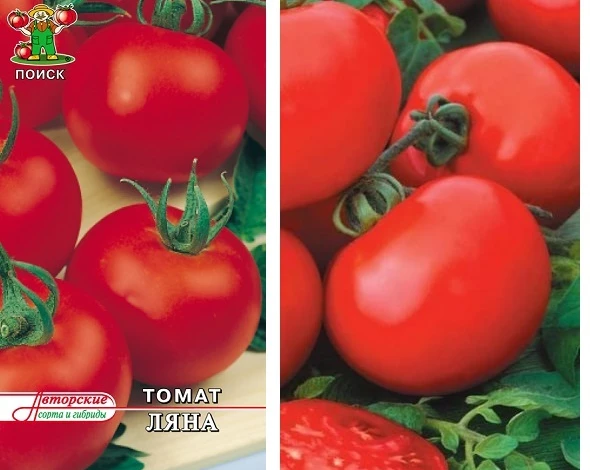
Дебют — это сорт с крупными, плотными розовыми плодами и сладким вкусом. Он отличается высокой устойчивостью к болезням и хорошо растет как в открытом грунте, так и в теплицах.
4. Розовая сказка
Этот сорт привлекает внимание своими крупными розовыми плодами и отличной урожайностью. Розовая сказка имеет хороший вкус и используется для приготовления салатов, соусов и консервации.
5. Розовая леди
Розовая леди — это сорт среднестебельных розовых томатов, которые имеют отличный вкус и высокую урожайность. Плоды этого сорта хорошо подходят для свежего употребления, консервирования и приготовления соусов.
Способы выращивания
Для успешного выращивания устойчивых и высокоурожайных розовых высокорослых сортов томатов необходимо учесть несколько важных факторов.
Выбор места и подготовка почвы
Томаты предпочитают солнечные и защищенные от ветра участки. Перед посадкой необходимо подготовить почву, добавив компост или перегной для обогащения ее питательными веществами.
Подготовка семян и посев
Семена сортов томатов следует предварительно проращивать во влажной среде. После этого их можно сеять в грунт на глубину около 1-2 см.
Уход за растениями

Томаты нуждаются в регулярном поливе, особенно в период созревания плодов. Растения также нуждаются в подкормках, используйте органические удобрения для повышения урожайности.
Профилактика болезней
Для предотвращения заболеваний розовых высокорослых томатов рекомендуется проводить регулярные обработки растений специальными препаратами. Также стоит обратить внимание на правильное формирование кустов и удаление больных листьев.
Уход за розовыми высокорослыми томатами
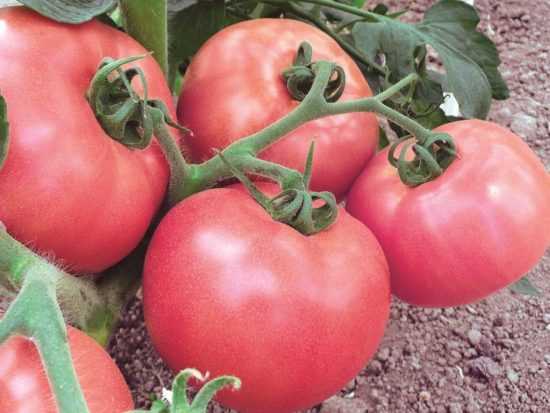
Розовые высокорослые томаты – это одни из самых популярных сортов томатов благодаря их высокой урожайности и устойчивости к болезням. Однако, чтобы получить хороший урожай, необходимо обеспечить им правильный уход.
Подготовка почвы
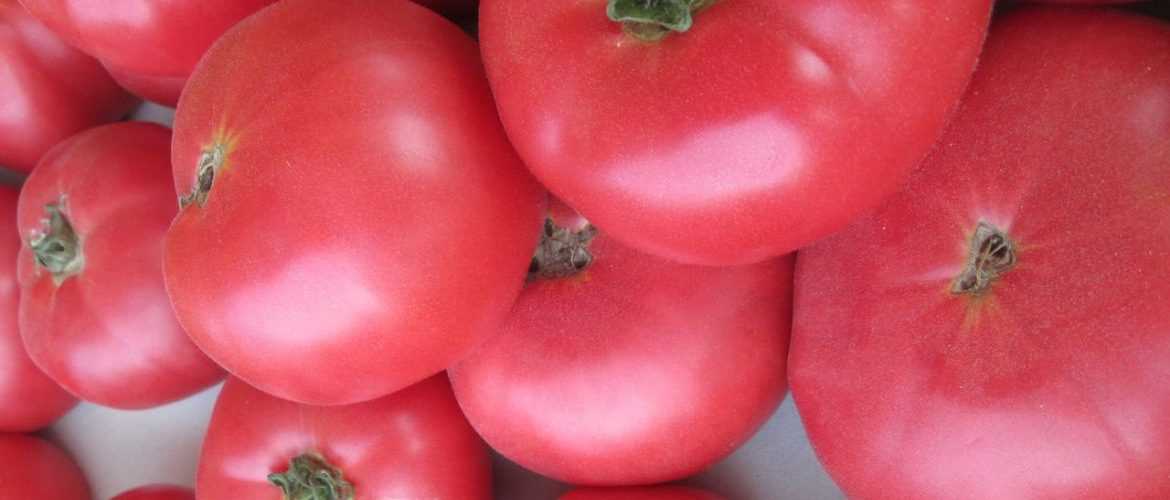
Перед посадкой розовых высокорослых томатов необходимо подготовить почву. Она должна быть плодородной, богатой органическими веществами и хорошо дренированной. Рекомендуется также добавить комплексные удобрения, чтобы обеспечить растения необходимыми питательными веществами.
Полив
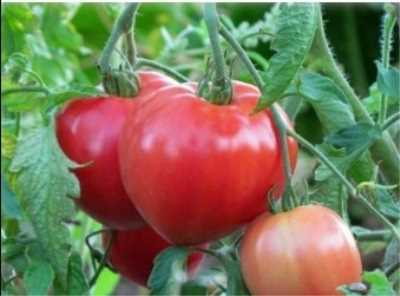
Розовые высокорослые томаты нуждаются в регулярном поливе. Они не переносят сухость почвы, поэтому рекомендуется поливать их каждые 3-4 дня в период сухой погоды. Однако, следует избегать переувлажнения почвы, так как это может привести к гниению корней и возникновению болезней.
Подкормка
Для обеспечения хорошего роста и развития розовых высокорослых томатов необходимо проводить регулярную подкормку. Рекомендуется использовать комплексные удобрения, богатые азотом, фосфором и калием. Подкормку следует проводить каждые 2-3 недели, начиная с момента появления первых побегов.
Поддержка растений
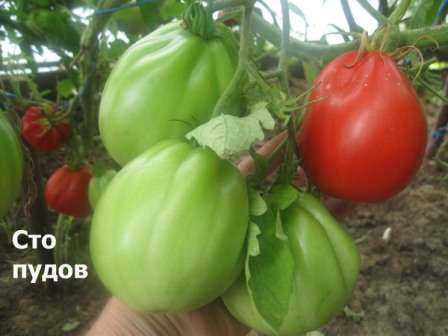
Розовые высокорослые томаты обычно достигают значительной высоты, поэтому им необходима поддержка. Рекомендуется использовать опоры, столбики или сетки, чтобы предотвратить прогибание стеблей и повреждение плодов. Поддержка растений также облегчит сбор урожая и обеспечит лучшую циркуляцию воздуха, что поможет предотвратить развитие болезней.
Следуя этим рекомендациям, вы сможете обеспечить хороший уход за розовыми высокорослыми томатами и получить обильный и качественный урожай.
Сбор и хранение урожая
После того как вы получили обильный урожай розовых высокорослых томатов из устойчивых к болезням сортов, настало время собирать и сохранять его правильным образом.
Сбор томатов рекомендуется проводить в сухую погоду, чтобы избежать контакта плодов с влагой, что может привести к развитию гнили. Перед сбором стоит обязательно проверить зрелость плодов – они должны быть розового цвета и иметь достаточно мягкую консистенцию.
Собранные томаты следует аккуратно окультуривать от пыли и грязи и разложить в один слой в ящики или корзины. Важно не перегружать контейнеры, чтобы плоды не сдавливали друг друга.
Для хранения томаты рекомендуется выбрать прохладное и сухое место, где температура будет колебаться в пределах +10…+15 градусов. Хорошим вариантом будет подвал или комната с низкой влажностью. Важно также избегать прямого солнечного света, который может привести к перегреву плодов.
Хранимость розовых высокорослых томатов устойчивых к болезням сортов может достигать нескольких месяцев, если соблюдены все условия правильного хранения.
Вопрос-ответ:
Какие существуют сорта розовых высокорослых томатов?
Существует множество сортов розовых высокорослых томатов, но в топ-5 самых популярных можно включить следующие: «Розовая гигантская», «Розовый шар», «Розовый гигант», «Розовый слоновый хобот» и «Розовая княгиня».
Какие из этих сортов самые устойчивые к болезням?
Самыми устойчивыми к болезням среди розовых высокорослых томатов являются «Розовая гигантская» и «Розовый гигант». Они обладают сильной иммунной системой и меньше подвержены различным инфекциям.
Какой сорт из списка является самым высокоурожайным?
Самым высокоурожайным сортом розовых высокорослых томатов из списка является «Розовый слоновый хобот». Он способен дать богатый урожай больших и сочных томатов.
Какой сорт розовых высокорослых томатов лучше всего подойдет для выращивания в домашних условиях?
Для выращивания в домашних условиях лучше всего подойдет сорт «Розовая княгиня». Он компактный, имеет малые размеры и хорошо адаптируется к ограниченному пространству.
Нужно ли особое уходить за розовыми высокорослыми томатами?
Розовые высокорослые томаты требуют некоторого особого ухода. Они нуждаются в подвязке и подпорке, чтобы предотвратить слом стеблей под весом плодов. Также важно регулярно удалять сухие листья и проводить подкормки для обеспечения хорошего роста и развития растения.


